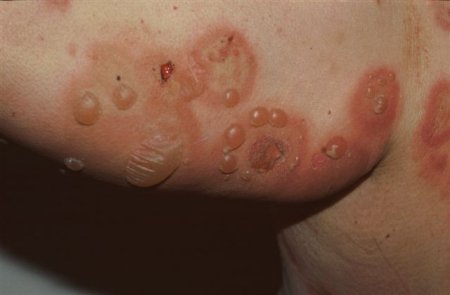Last reviewed: 19 Mar 2025
Last updated: 11 Dec 2020
Summary
Definition
History and exam
Key diagnostic factors
- presence of risk factors
- pruritus
- tense blisters on normal or erythematous skin
Risk factors
- age 60 to 90 years
- major histocompatibility complex (MHC) class II allele (DQB1*0301)
- male sex
Diagnostic investigations
1st investigations to order
- skin biopsy for histopathological evaluation with light microscopy
- skin biopsy for direct immunofluorescence testing
- indirect immunofluorescence test on serum
Emerging tests
- immunoblotting
- immunoprecipitation
- fluorescence overlay antigen mapping (FOAM) technique
Treatment algorithm
Contributors
Authors
Vesna Petronic-Rosic, MD, MSc, MBA
Professor and Chair
Department of Dermatology
Georgetown University
MedStar Washington Hospital Center
Washington
DC
Disclosures
VPR declares that she has no competing interests.
Peer reviewers
Lawrence Parish, MD
Clinical Professor of Dermatology and Cutaneous Biology
Director
Jefferson Center for International Dermatology
Jefferson Medical College
Thomas Jefferson University
Philadelphia
PA
Disclosures
LP declares that he has no competing interests.
Timothy Patton, MD
Assistant Professor of Dermatology
Department of Dermatology
University of Pittsburgh
Pittsburgh
PA
Disclosures
TP declares that he has no competing interests.
Use of this content is subject to our disclaimer
